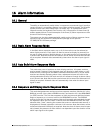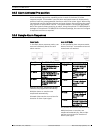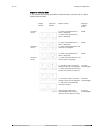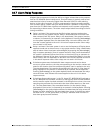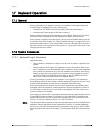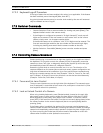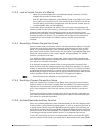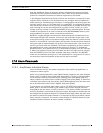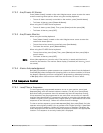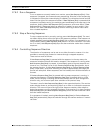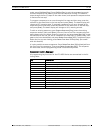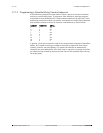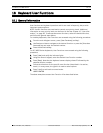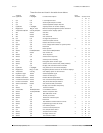
LTC 8600 | LTC 8800 Series en | 65
F.01U.127.393 | 2.0 | 2009.03 Instruction Manual Bosch Security Systems, Inc.
With the AutoDome Series of cameras, auxiliary commands are used to activate/
deactivate certain operational features/functions. Refer to the AutoDome camera
manual for complete information on features supported by the model.
In the Allegiant Receiver/Driver Series, the first four auxiliaries correspond to relay
outputs. Option switches in the receiver/driver can configure these to operate as
either latching or momentary type functions. If configured for the latching type, the
auxiliary stays on once it is activated until it is turned OFF. If configured as momen-
tary, the auxiliary remains on only as long as the [Enter] key is pressed. Auxiliary out-
puts 2 through 4 can also be configured as a contact closure, 24 VAC, or as line
voltage. Auxiliary number 5 controls the DITHER function, detailed below. Auxiliary
number 6 corresponds to an internal receiver/driver AUTOPANNING feature, previ-
ously enabled by an option switch inside the receiver/driver.
DITHER is a legacy Allegiant receiver/driver feature designed to extend the life of
tube-based low-light level cameras. Its function was to prevent bright lights in the
scene from burning a spot on the camera imager. When this feature is active and the
pan/tilt is not moved for a period of about two minutes, the receiver/driver automat-
ically pans right for approximately 0.5 seconds. Two minutes later, a pan left occurs,
and the cycle continues until disabled. The feature is enabled by an option switch in
the receiver/driver, and is controlled by the auxiliary 5 function. To activate the
DITHER function, turn [ON] auxiliary 5. To deactivate the feature, turn OFF auxiliary
5. When first enabled, the pan/tilt unit makes one short left/right cycle to indicate
that the DITHER function has been activated. Note that a camera in the DITHER
mode will accumulate a viewing error if left unattended for a long period of time, so
occasionally a manual adjustment of the pan/tilt may be required.
17.5 Alarm Commands
17.5.1 Arm/Disarm Individual Alarms
Alarm commands control the system's automatic video switching capabilities, in
response to alarm signals.
When using IntuiKey keyboards, press [Alarm Control], located on the main Allegiant
menu screen, to enter a menu screen with these options. To arm an individual alarm
on the monitor currently controlled by the IntuiKey, press [Arm Alarm], enter the
alarm number to be armed via the numeric keypad, then press [Enter]. To disarm an
individual alarm when using the IntuiKey, press [Disarm Alarm], enter the alarm num-
ber to be disarmed via the numeric keypad, then press [Enter].
To arm/disarm an individual alarm when using an LTC 8555 Series keyboard, press
Alarm, enter in the alarm number to be armed via the numeric keypad, and then
press [ON] to arm the alarm, or [OFF] to disarm it. The camera number activated by
an alarm, by default, is the same as the alarm number, although this relationship can
be changed via the optional Allegiant PC-based MCS package. When the alarm num-
ber does not match the camera number, it is important to specify the alarm number
when using this command. The monitor status display (if enabled) shows CA (cam-
era/alarm armed) whenever an armed camera is selected.




